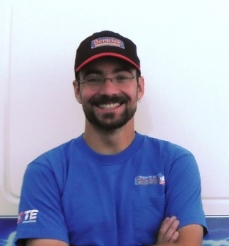The buzz surrounding the Olympic Games is palpable; years of training and sacrifice culminate in competition as the world watches. But what the world may not always see are the teams of people devoted to creating and maintaining the training facilities -- world-class training environments.
 |
| BEC Foreman Cathy Starr on the USOTC Campus in Colo. Springs |
With the U.S. Olympic Training Center in its backyard, Berwick Electric Co. (BEC) has had the opportunity to help maintain the best training environment possible for both national and international athletes. We recently had the privilege of chatting with BEC Foreman Cathy Starr about her experience installing a Mass Notification System on the U.S. Olympic Training Center (USOTC) Campus in Colorado Springs.
Berwick Electric Co. (BEC): Describe your work at the USOTC.
Cathy Starr (CS): We are currently installing the first non-military mass notification system in Colorado Springs. In the event of an emergency, this system allows all of the buildings on campus to communicate with each other, and it also provides immediate lock-down areas for added security. We’ve been working on the installation on and off for about four and-a-half years. We are just about to finish the ninth building, and we have about one more year until the job is complete. The current project has been the smoothest; we’re kind of in the zone after updating so many buildings.
BEC: How does the mass notification system work?
CS: This system is actually part of the fire alarm panel, and it’s integrated with the fire alarm speakers and strobes. One system functions both as the fire alarm and the mass notification system. It’s pretty intricate.
 |
| BEC Electrician Umberto, a.k.a. "Junior", completes wiring at the USOTC.
|
BEC: You seem very passionate about your work. What are the things that captivate your interest?
CS: To me, it’s all interesting. It’s fun to observe all of the different cultures and activities that collide on the USOTC campus. During the time I’ve been here, wrestling teams from China, India, and Sweden have visited. Working with the staff here is also a very pleasant experience. It makes life very easy.
I also like that I get to deal with so many people throughout the day. From contractors, HVAC technicians, and painters, to electricians and the USOTC’s maintenance staff, I enjoy interacting with so many different trades. Working in a variety of locations is also interesting. No two days are the same. I also enjoy working with fire alarm systems -- safety is important!
BEC: What is it like to work in an Olympic training facility while the winter games are taking place in Sochi?
CS: Well, the athletes who train here are the summer sports athletes; I don’t know of any athletes from this area who are in Sochi. However, a lot of the USOTC staff are in Sochi now, so it will be interesting to hear all of their stories when they return.
When we were on the USOTC campus during the last summer games, there was a lot of energy and tension. Everyone was very focused, as they should be. It’s exciting to be around that kind of energy! I feel very fortunate to have had the experience of working at the USOTC.
_______________________________________________________________________________
To learn more about the electrical services provided by Berwick Electric Co., click here.












